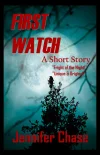
There are more than 14,000 murders committed every year across the United States (on average). That number averages out to about 38 murders every single day. This number is based on crime statistical data from 2011 by the FBI Uniform Crime Reports. What is also concerning is that violent crime is trending upward across the United States.
The FBI Uniform Crime Reports are the collection of statistics and data from approximately 17,000 law enforcement agencies including city and town police departments, state law enforcement, tribal authorities and college and university police, on the violent crimes of murder and non-negligent manslaughter, rape, robbery and aggravated assault. It also includes data on the property crimes of larceny, burglary and auto theft.
What is concerning about the number of annual homicides is that there are other violent crimes committed every single day as well, such as forcible rape, robbery, and aggravated assault, which elevates the violent crime daily incidents. When all of these types of investigations go cold, these cases pile up exponentially.
 The clearance rate of homicides, on yearly average , is approximately 60%, which includes clearance by arrest and exceptional means. I take an exception to clearance by “exceptional means”, which means that they have identified the offender and have enough evidence, but either law enforcement cannot find the person or has run into some type of problem. I don’t like statistics including an offender that has not been arrested for homicide as a cleared homicide case. In addition, there is room for reporting errors along with distorted or skewed information from law enforcement agencies.
The clearance rate of homicides, on yearly average , is approximately 60%, which includes clearance by arrest and exceptional means. I take an exception to clearance by “exceptional means”, which means that they have identified the offender and have enough evidence, but either law enforcement cannot find the person or has run into some type of problem. I don’t like statistics including an offender that has not been arrested for homicide as a cleared homicide case. In addition, there is room for reporting errors along with distorted or skewed information from law enforcement agencies.
Based upon the above reported crime statistic for homicide, it means that there are more than 5,000 cold cases every year. There are many reasons a homicide case turns cold, such as lack of physical evidence and inability to identity the victim. There just isn’t enough cold case units across the United States to address and investigate all of the cold cases waiting for closure.
I found an interesting forensic article published in October 2012 that addressed the scientific need to identity the thousands of John/Jane Doe cold cases by using a multidisciplinary approach to identifying the remains.
A Lawrence Livermore National Laboratory research team has found a scientific approach to identifying the remains of missing persons. They use a “bomb pulse” radiocarbon analysis combined with anthropological analysis and DNA techniques. They used their application to identify the remains of a body from 41 years ago. The radiocarbon analysis of two teeth helped to determine more of a precise birth date of 4 ½ year old child, which had been thought to be a 7-9 year old child. The DNA analysis determined the child to be male and a mitochondrial profile concluded a match to a living relative.
Every effort and scientific application should be implemented into cold case investigations, not only to bring the perpetrator to justice, but also to give families closure.
***
More forensic articles to check out:
Forensics and Criminology: How’d They Do That?
Sister’s DNA Solves Missing Persons Case After 37 Years
6 Mistakes to Avoid at a Crime Scene Straight From a Cold Case Detective
***
Please join me:
Author Blog: https://authorjenniferchase.com/
Book & Crime Talk: http://blogtalkradio.com/jennifer-chase
Books: Compulsion Dead Game Dark Mind Dead Burn Dark Pursuit
Silent Partner Screenwriting
***
Latest Book Release: Now an Amazon Best Seller: BODY OF THE CRIME




































Radiocarbon dating is a fascinating technique, especially when done on the eyes.
LikeLiked by 1 person
Reblogged this on Mike Thomas.
LikeLike
Thanks Mike! Hope you’re having a great weekend 🙂
LikeLiked by 1 person
You’re welcome. I most certainly am. Likewise, I hope!
LikeLiked by 1 person
What an interesting article! That’s a lot of cold cases; I wish they could all be solved, especially for the families. Thanks Jennifer!!
LikeLiked by 1 person
Yes, wouldn’t it be great to have all of these cases solved/closed. DNA technology is helping.
LikeLike